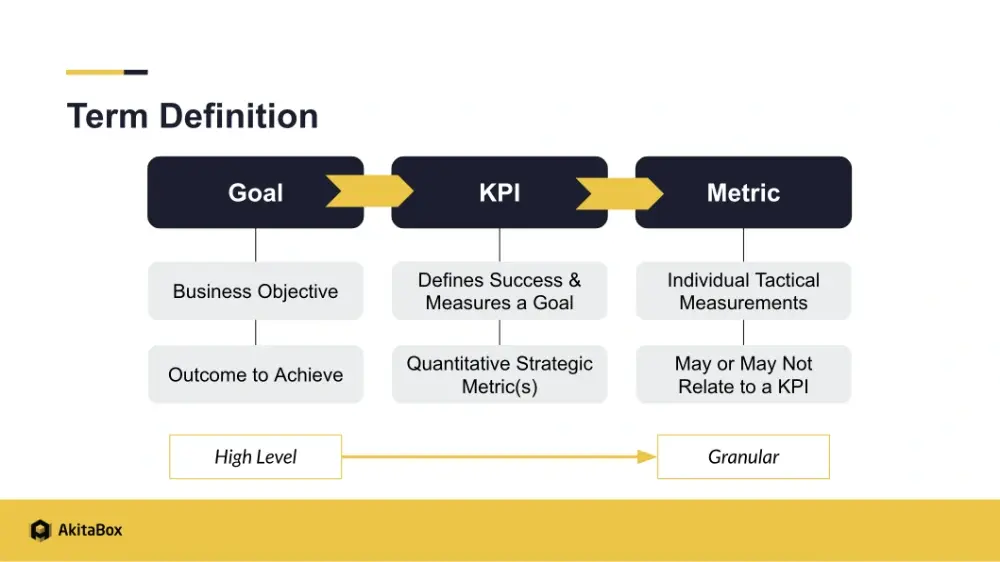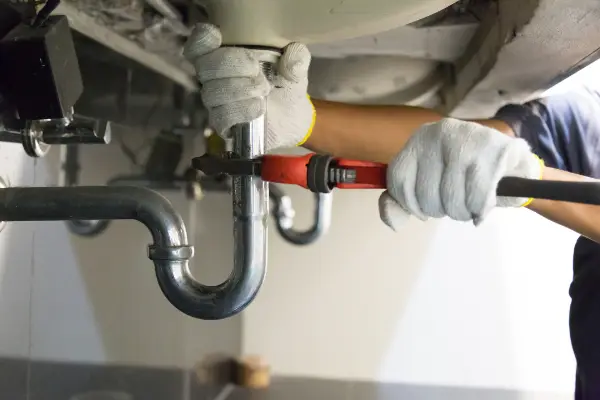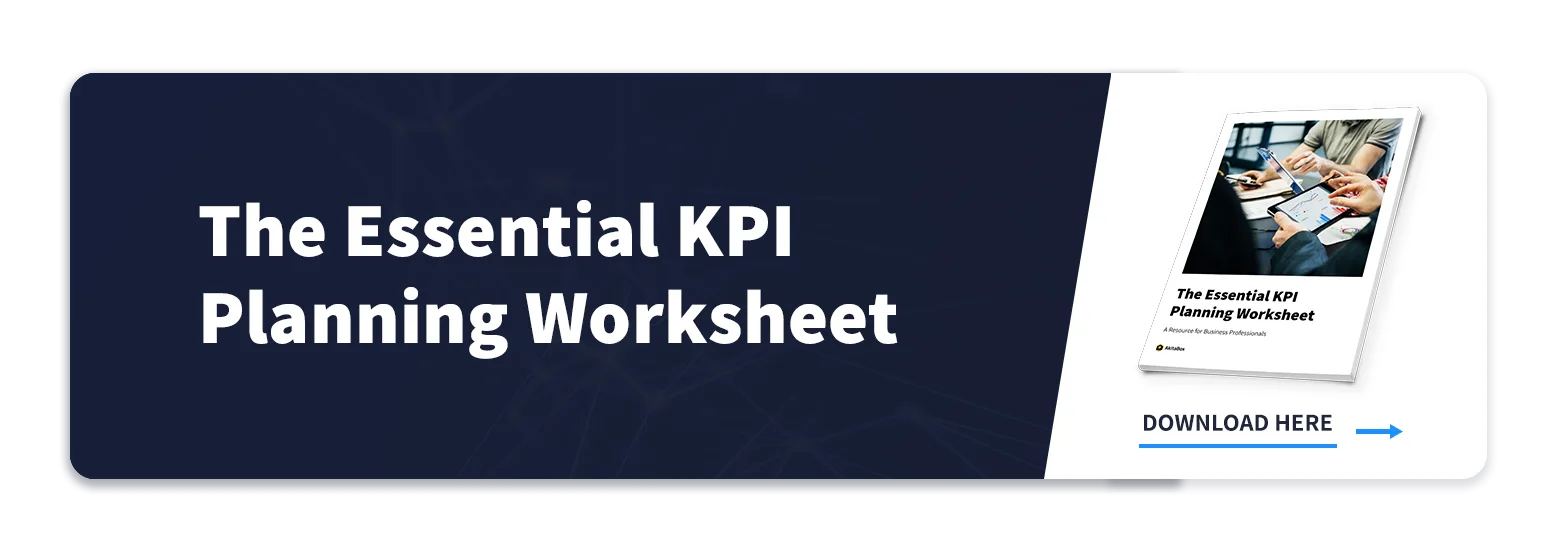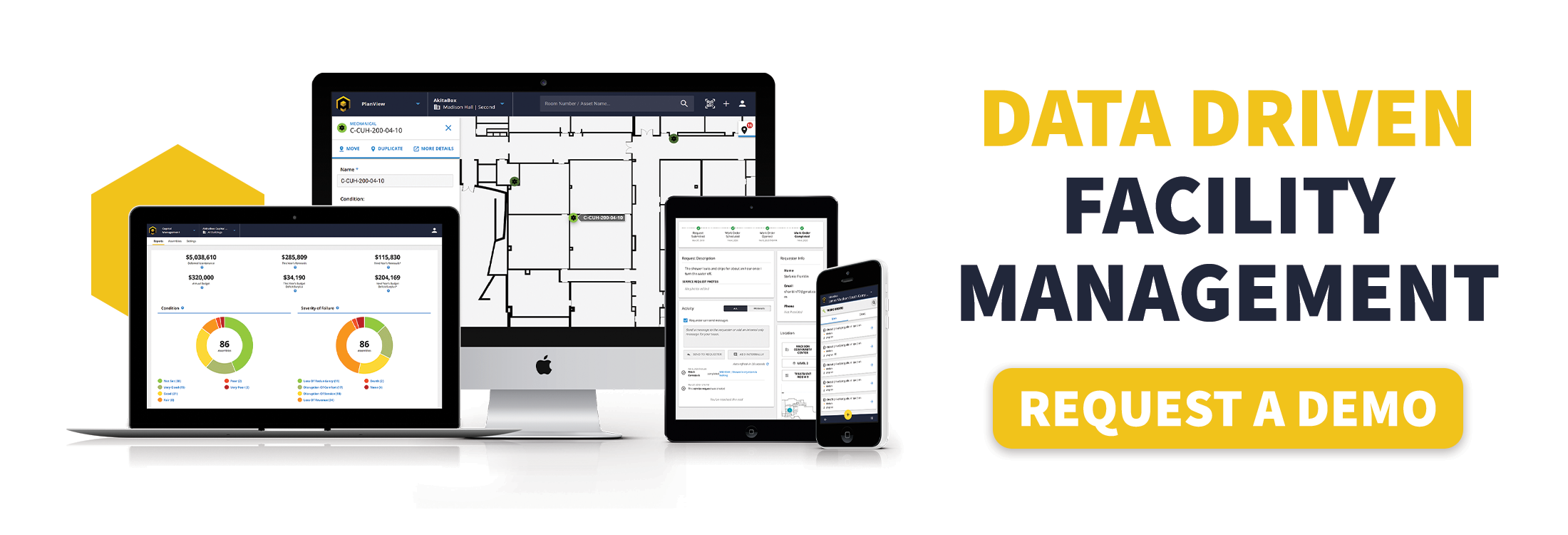KPIs, or key performance indicators, take raw measurements and give context to your operational strategy. They can tell you if a project is successful, if your business goals are being accomplished, how efficiently your team is working, and even whether you have enough team members.
As the Vice President of Customer Experience at AkitaBox, I help facilities teams develop meaningful KPIs for their unique operations and guide them in how to use AkitaBox facilities management software to measure and monitor their KPIs.
Are you ready to take control of your KPIs? Let’s explore key KPI terms, common KPIs in facilities management, and how to choose which KPIs to focus on.
Key KPI Terms
The terms “KPI,” “metric,” and “goal” tend to be used interchangeably, however, there are nuances between the concepts. It’s helpful to understand the differences, so you’re better able to use available data to define and tell the story of your success.

- Goals are the high level, strategic objectives you want to achieve. Think of these as the broad changes you want to enact or outcomes you want in the organization.
- KPIs are used to define and measure success toward a goal. KPIs are the map used to describe which distinct metrics to review, and they note any data targets you want to hit. KPIs help you know if you’re on track or getting closer to meeting the initiative.
- Metrics are individual measurements of data. These singular data points can help you make decisions, but they do not define a goal or objective, nor do they give context to progress all on their own.
An easy way of envisioning the differences between a metric versus a KPI is to think about how you consider time spent. For example, tracking your team’s total hours logged on maintenance work per week is a singular data point. This metric can help you understand your team’s productivity (are they working as many hours as you expect?), but it does not link to any performance goals by itself. You cannot tell if they are working on the right things.
Alternatively, perhaps you track hours to first response on critical reactive requests and have set a target of 2 hours. Tracking response time does not tell you how many hours your team is working. Instead, pairing this metric and target goal form a KPI that helps you have a better sense of whether your team is providing good customer service and focusing on reducing equipment or occupant downtime. This type of KPI can be much more impactful to capturing your department’s success than simply working many hours.
Alternatively, perhaps you track hours to first response on critical reactive requests and have set a target of 2 hours. Tracking response time does not tell you how many hours your team is working. Instead, pairing this metric and target goal form a KPI that helps you have a better sense of whether your team is providing good customer service and focusing on reducing equipment or occupant downtime. This type of KPI can be much more impactful to capturing your department’s success than simply working many hours.

Common KPIs within Facility Management
Facility Management KPI #1: Team Efficiency
Tracking team efficiency KPIs can help you optimize your team’s performance and assess what processes are or are not working. You can:
- Identify inefficiencies: Using metrics, you can identify areas where your team may be wasting time or resources. This can help you identify opportunities to improve processes, streamline workflows, and reduce costs.
- Improve productivity: Once you identify the most productive team members and processes, you can then use this information to implement best practices across the team, which can lead to increased productivity and improved results.
- Manage performance: Tracking team efficiency can also be an important part of performance management. By measuring team performance, you can identify areas where team members may need additional training or support, or where changes in roles and responsibilities may be necessary.
For example, AkitaBox can help you measure:
- How is my team performing overall?
- Hours worked
- Tickets completed
- Average response times
- Average time to completion
- Are resolution and first response times appropriate?
- Could resolution times be better if we changed the assignment process?
- Are bottlenecks occurring because team members are unable to take specific trade issues?
- Are we completing more or fewer work orders (WOs) than are opening?
-
- This can highlight whether you have too few people (high backlog) or too many people working on an area (no backlog).
-
- How many service requests are coming in electronically, and are they getting processed?
Facility Management KPI #2: Preventive vs Reactive Maintenance Ratios
Tracking preventive versus reactive maintenance work is essential for several reasons:
- Cost savings: Preventive maintenance (PM) aims to avoid equipment breakdowns, which can result in costly repairs and unplanned downtime. By keeping track of PM, organizations can save money by reducing the frequency and cost of reactive maintenance.
- Improved equipment performance: Regular PM ensures that equipment operates at peak performance levels, improving its efficiency and productivity.
- Safety: PM can also contribute to improved safety by identifying potential hazards before they cause accidents.
- Compliance: Many industries are subject to regulations that require regular inspections and maintenance of equipment. By tracking PM, organizations can demonstrate compliance and avoid penalties.
For example, AkitaBox can help you measure:
- Time-boxed ratios of completed preventive versus reactive work orders
- Overdue metrics, which can tell you if the team is prioritizing planned maintenance work or not
- Future scheduled work orders, which can give visibility to resource demand
Facility Management KPI #3: Areas of Cost or Budgeting
Establishing KPIs related to areas of cost reduction or budget performance are another area of importance to facility managers.
- Budget control: By tracking major replacement costs and forecast data, you can help ensure an appropriate budget is set and measured against.
- Cost reduction: By tracking where you spend the most time and energy, you can better identify areas that need more PM attention or full replacement.
For example, AkitaBox can help you measure:
- What areas are consuming the most time and resources?
- Is it a particular building?
- A trade area or building system that needs full replacement or more dedicated resources?
- Reactive work order metrics
- How are we performing against planned budget vs expected replacement costs?
How Do I Choose Which KPIs to Focus on?
Choosing the right KPIs to focus on requires careful consideration of your organization goals, industry benchmarks, and the specific area of your operations that you want to improve. By reviewing these areas, you can choose KPIs that are relevant, measurable, and meaningful for your team.
Review organization-wide goals
The first stop to defining operational KPIs is to reference what may be most important to your organization or department. Aligning an organization goal to a team KPI helps showcase how your team’s work supports organizational initiatives.
For example, is part of your organization’s strategy to convert 100% of operations to digital processes? This could lead you to track that all service requests are coming to your team electronically, rather than word of mouth or email.
Identify what matters to you or is a pain point you want to focus on
Be specific. It’s important to choose something that you can define a metric and target around to gauge progress. Some examples of areas to review within facility management are:
- Efficiency with process, such as assignment and triage of work
- Team knowledge or gaps within certain disciplines
- Clarity of what your team is working on and for how long
- Do you have enough people to service the size of your facilities? This is especially important if you dig in deeper and identify that your team is spending more time on fixing old equipment instead of focusing on preventive tasks.
Consider what your stakeholders or leadership care about
While there may not be organizational goals defined, your direct leadership may have particular focus areas or hot spots they care about.
For example, it’s common for managers or leadership to watch capital costs and forecasting. KPIs related to prevention work completion or major replacement projects give context to your team’s work to show how it aligns to their focus area.

Ask your team what matters to them
Asking your team for feedback helps bring awareness and attention to their contributions. Additionally, team-based performance metrics can help you and individuals understand their productivity or workload. For example, did you realize that “a lot” of time spent on a specific task actually meant literally days or weeks of work? Visibility can give clarity and insights, which increases your ability to make decisions.
Start small and set incremental targets
Choose a limited number of KPIs to focus on. Too many goals and targets can be overwhelming. Instead, start with a few key areas that will have a noticeable impact and can help you get more comfortable with identifying and setting targets and priorities.
Once you narrow down your focus, you can either set metric targets based on industry benchmarks or choose a target that will show incremental progress. Don’t be concerned with setting a target too low. If you see improvement, you can always set a new target!
How to Track KPIs in AkitaBox
AkitaBox’s intuitive, easy-to-navigate interface makes monitoring your FM activities so easy. Whether you already know your KPIs or you’re just starting to look for problem areas that may warrant a KPI, AkitaBox’s reporting and capital planning functions give you a clear picture of how your assets and employees are functioning. In this video, I give you a short guided tour of how to track KPIs using AkitaBox.
Conquer Your KPIs
Turn your facilities data into insights that can help you improve your team’s performance and support your organization’s mission with help from AkitaBox. Request a free demo today!

